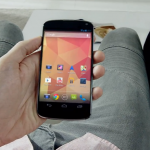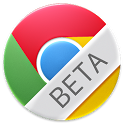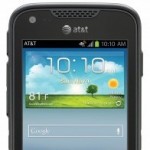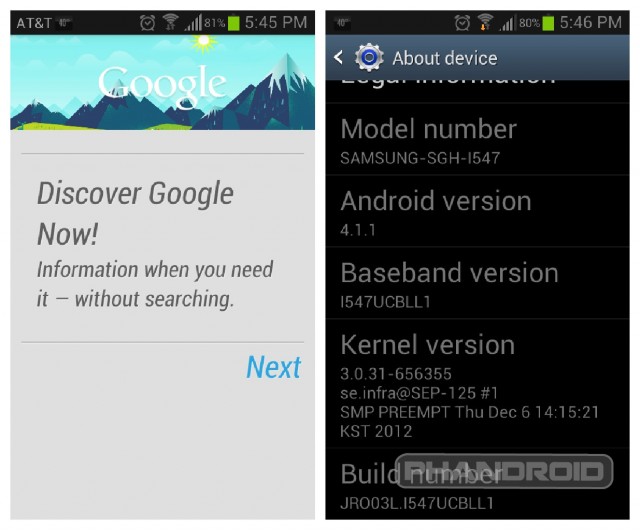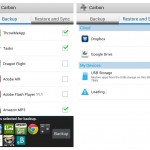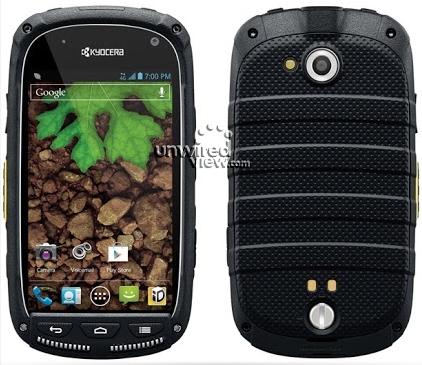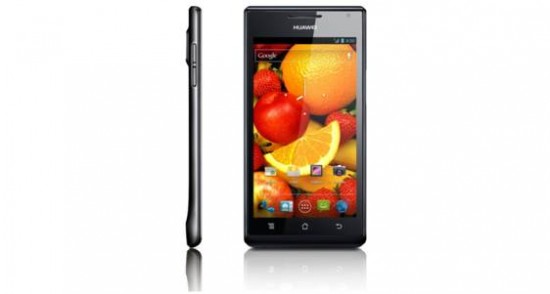Android Authority |
- Huawei Ascend D2 vs Google Nexus 4
- Roundup: Android gaming consoles and controllers
- Oppo Find 5 set for January 29th release in China
- First look: LG GA7900 third-gen Google TV [video]
- Tapatalk HD launches version 1.0, goes on one-day sale
- Huawei Ascend G520: The $225 quad core smartphone that’ll never land in America
- LG says the factories pumping out the Nexus 4 are running “without a hitch”
- Rumor: Lenovo to launch their own version of the ASUS Transformer in 2013
- Samsung Ukraine: The dual SIM Galaxy Grand comes out next month for $550
- Will Facebook announce a smartphone this Tuesday?
| Huawei Ascend D2 vs Google Nexus 4 Posted: 15 Jan 2013 03:00 AM PST
Another day, another fresh-faced 5-inch 1080p smartphone has entered the VS chamber, this time from a manufacturer whose name is still hard as ever to pronounce (for some). You may have met the Huawei Ascend D2 before, but you will want to stick around to see how the phone – and its rather impressive specs – fares against Google's Nexus 4. The battle between the Ascend D2 and the Nexus 4 starts here. Specs
Build Quality & DesignThe Ascend D2 is pleasant enough to look at, but it's neither groundbreaking nor awe-inspiring, despite the company's attempt to jazz it up with some aluminum and metal. The phone is well-built, but the sturdiness comes at the expense of its weight. At 170 grams, the D2 is heavier than the Nexus 4 (139 grams) and other 5-inchers as well. Given the bigger screen size, it's not surprising to see that the phone is taller (140 mm VS 133.9 mm), wider (71 mm VS 68.7 mm), and thicker (9.9mm VS 9.1mm).
A little bit out of the ordinary, the microUSB port and micro SIM card slot are placed on top, while the speaker sits on the bottom. It's worth to mention as well that the D2 is dust and water resistant. What about the Nexus 4? At a glance, the latest Nexus phone can be easily mistaken for the Galaxy Nexus, but this isn't a bad thing at all. We're a fan of the clean all-black front frame of the series. Turn the N4 over and you'll be greeted with the oft-praised glass back that "sparkles".
LG – at the behest of Google – is making a design gamble by going with glass for both sides of the device; all in the name of making it look and feel more premium. While it has succeeded in meeting that particular goal, it does leave the burden to users to be extra careful with their expensive toy. Butter fingers should look into investing in a bumper or case for a better peace of mind. The head is telling us to declare the Ascend D2 as the winner, but the heart is choosing the Nexus 4. You may face the same dilemma, but ultimately you get to make your own decision, based on your preference. DisplayHuawei's Ascend D2, like other flagship devices of 2013, follows the unwritten rule of being equipped with a full HD display (1,080 x 1,920 resolution). To be more specific, the Ascend D2 boasts a 5-inch 1080p IPS+ screen with 443 ppi. The Nexus 4 also uses an IPS+ panel, one that's protected by Gorilla Glass 2, but the 4.7-inch screen only offers a resolution of 768 x 1,280 with 320 ppi. However, the N4 benefits from the use of Zerogap technology, which eliminates some extra layer from the screen for a brighter display that's more responsive to touch.
Thanks to its bigger and sharper screen, the Ascend D2 edges the Nexus 4 in this round. However, make no mistake that the Nexus 4 offers as brilliant and beautiful of a display as its competitor. Besides, some may argue that anything above 300 ppi on a phone can simply be considered overkill. At the end of the day, both are top-notch displays. If you’re planning to watch a lot of 1080p movies on your phone, then you may want to consider choosing the Ascend D2. HardwareThe Ascend D2 is powered by Huawei's K3V2 quad-core processor. It's the same chip you'll find on the Ascend D Quad XL, but clocked higher at 1.5GHz. Various benchmark test results place Qualcomm’s Snapdragon S4 Pro – used on the N4 – ahead, but in real life the K3V2 is an able performer that's sufficient enough to run all your apps and games without hiccups. The phone comes with 32GB of internal storage, which more than makes up for the lack of a memory expansion slot. Other specs include a 13MP rear camera with BSI sensor, a 1.3MP front-facing camera, and a 3,000mAh battery.
Although the battery is non-removable, it has a bigger capacity than what most smartphones are packing. It can also take advantage of Huawei's smart power-saving technology that reduces power consumption when the phone is idle by 20%. Meanwhile, the Nexus 4 sports a quad-core 1.5GHz Snapdragon S4 Pro processor that can easily blow competing SoCs out of the water. It also comes with 2GB of RAM, 8MP rear camera, 1.3MP front-facing cam, and a non-removable 2,100mAh battery. The Nexus 4 is only available in 8GB and 16GB models, which makes the fact that it doesn’t have a microSD slot more lamentable. It may be hard to believe, but apart from the processor, the Ascend D2 has the overall better specs, though not by a mile. For instance, Huawei’s offering doesn't support wireless charging and NFC. Then again, getting the Nexus line is never about owning the latest and greatest in hardware.
SoftwareRunning atop Android 4.1 Jelly Bean on the Ascend D2 is the Emotion UI, which actually is a pretty light skin compared to Samsung's TouchWiz and HTC's Sense. You'll get to choose between the 2D and 3D Home launchers; both actually look very similar to a pure Android interface – well, almost. Aside from a customized lock screen, there's also nifty feature that lets users hide the on-screen buttons on the phone. You can say goodbye to third-party solutions if you want to maximize the screen real estate. The Nexus 4 ships with a pure and wholesome Android 4.2 Jelly Bean. It may not come with too many enhancements that an UI overlay has to offer, but Google has been doing a darn good job in making sure that it covers all the bases. If there's one reason to get the Nexus 4, it'd be for the promise of getting software updates straight from the big G. It should come as no surprise that the Nexus takes this round. Video comparisonPros and ConsHuawei Ascend D2 Pros
Huawei Ascend D2 Cons
Google Nexus 4 Pros
Google Nexus 4 Cons
ConclusionHuawei is going all out with the Ascend D2 to ensure that it will make a big splash when it lands. The keyword here is "when" – especially for folks outside of China. While Huawei doesn't have any problem flooding the market with low- to mid-range phones, the release of its flagship phones is often delayed. We're definitely interested in hearing more launch and pricing details of the Ascend 2, we can imagine you are too. The Nexus 4 isn't without its flaws. The glass back might be prone to scratches and cracks, and LG and Google have done an impeccable job in making the flagship Nexus device almost impossible to attain. But still, being that it sports the (currently) fastest processor in the market and has the full backing of Google, as well as the promise of a stock Android experience – it's not a wonder that the N4 is highly sought after. Which one would you go for? Related Posts |
| Roundup: Android gaming consoles and controllers Posted: 15 Jan 2013 02:44 AM PST
Like many other Android fans, you love a good game. Whether it be a simple puzzle game or an all-out RPG, you love spending your free time playing Android games. With over 700,000 options on the Play Store, Android gaming is for real. The question is, which is the best way to play them? We'll round up a few of the bigger players and most popular Android gaming consoles and controllers. The consolesThe newest craze in mobile gaming is not mobile at all. In fact, a few of your options involve you sitting down in front of your TV again! Whether it be a small screen or your living room TV, the time is approaching for you to be tethered once again. We've covered these three in depth previously, but they deserve comparison to the other options in this article. OUYA
The trendsetter, the innovator, the most anticipated console in a long time, if not ever. OUYA brings console gaming back in a very familiar way, and it's just as we left it when we moved to mobile. It's a very small set-top box with support for a wireless controller. It attaches to your TV via an HDMI cable, so the minimalism is felt throughout. The controller looks to be absolutely perfect for gaming, maybe the best ever. So much promise in such a little package. Hold the phone, though. You'll have to ask yourself if you actually want to mess with a set-top box and a separate interface. At $99, it's a very attractive price, so you won't lose out on a huge wad of cash if you decide to grab one. If you have a wall-mounted TV, you may not even have a place to put it… and that could be a problem for some. It will definitely be a monster console, so we're excited for it. Project Shield
A complete shock at CES 2013, Project Shield is NVIDIA's entry into console gaming. The interesting part about Project Shield is that the console is self contained. A controller with a 5-inch, 720p OLED screen attached in a clamshell package is the difference here. It has support for Steam, making it a very attractive option for PC gamers. If it can get support from developers, it may take off. Unfortunately, we know very little about this one right now. We don't know pricing, availability, or what games will be available. It is reliant on WiFi for Steam support, and you'll have to be on the same WiFi network as your PC. That really limits the actual "mobile" aspect of this, and muddies the waters of "console". A rumored price point of somewhere in the $300 range suggest it will be high-end, and very substantially built. It also suggests that people will opt for other options before entertaining this one. Handheld gaming devices are almost extinct, and Android may not be able to reverse that trend for NVIDIA. GameStick
The new kid on the block seems to be looking for a fight. GameStick is a lower price point than OUYA at $79, is trying to get a similar amount of support from developers, and eliminates the need for a set-top box. It operates on an HDMI dongle that fits into the controller when not in use, making it ultra portable and compact. It may be a big job, but the GameStick seems keen on taking it on. The GameStick could be great, but the HDMI dongle is concerning. How much power can you pack into that little plug? OUYA embraces development, making it easily hacked and pretty powerful. Everyone is encouraged to develop for the OUYA, so you may just get the next viral hit. With GameStick, it seems as though they are concentrating on getting developer support to have games designed with them in mind. A smart move was designing a controller app for your Android device, so those games utilizing the accelerometer may be immediately available. The type and amount of support from developers and hackers may make this an interesting fight between the three. In controlPerhaps you don't want to invest in a console. Maybe you think a controller is all you need to round your gaming experience into form. That could be, but it may not work out as well as you think. Then again, maybe that old PlayStation or Xbox controller will work just fine, and you won't have to spend any cash at all. Let's go over a few options, shall we? MOGA
The MOGA line of controllers are more like an attachment for your device that a standalone controller. With a flip-up holster for your device, it secures you into landscape Android gaming heaven. A little smaller than we're used to in a controller, MOGA holds its own. The design follows the console controller model carefully, so everything is familiar and easy to use. With Bluetooth connection, MOGA is easily used on a variety of devices. While your tablet may not fit into the holster, the controller will still connect to it. A singular controller on a variety of devices make MOGA a very attractive device. The $50 price may be a little steep, but you get quite a bit with it in a leather case and free games. The interface is great, and easily lays out all of your Android games that have MOGA support built in. Buyer bewareWhat I found a bit surprising about MOGA was how many games on my device simply didn't have support for it. I have roughly 50 games in my Play Store library, and only about 4 of them have support. Games such as Grand Theft Auto 3, which were originally console games and play better with a controller, don't have support for MOGA. The MOGA home screen easily lays out the available games, but it's pretty frustrating to not be able to play many of my library. Before you invest, make sure your favorite games have support. The vice that attaches your phone to the controller holds it in tightly, but can block things like your power or volume buttons. If you want to take a screenshot, you may find that difficult. It also has a very stationary position, locking you into a certain angle with which to view the screen. The joysticks slide rather that pivot, and only support 8-way directional control making controlling some games a bit wonky. I found Asphalt 7, a favorite of mine, to be jerky and difficult to play with the MOGA. Nyko Playpad series
The Nyko Playpad follows the MOGA model in connectivity and design, and unfortunately in function as well. The joystick only supports 8-way motion (just like the MOGA) making some games a bit troublesome to play. There is no holster for your device to clip onto the controller itself, but it does come with a nice stand for it. Although there is a "Pro" series Nyko controller, it merely changes the shape of the device. Making it fit in the hand better does not forgive its poor play, and still limited support. If you're into portability, the Pro will disappoint. Think of toting around a PlayStation controller and you'll have a better idea of why this particular controller may not be what you need for mobile gaming. SteelSeries Free
The SteelSeries Free is a powerful little controller that really packs a punch. Although tiny, it does fit well in the hand and feels very natural to hold. At an easily dismissive 4"x2", it accomplishes more than the other two controllers we're comparing it to. Dual analog joysticks with full 360 degree rotation make FPS games much more enjoyable, and its extensive list of supported games is really impressive. For those of you that enjoy PC gaming, you may know SteelSeries from their other devices such as mice and keyboards engineered for the serious gamer. The SteelSeries Free has been a few years coming, and may well have been worth the wait. The only drawback is the $80 price tag. Paying that much for a controller is a bit steep, even with all it accomplishes. Android gaming has yet to fully accept peripheral devices to assist with gaming, so even with nearly 200 games supported, it's a far cry from being fully supported by Android. The workaround
Don't want a new controller, eh? You may be in luck. There are many options available out there for getting all types of console remotes to work with your Android device, ranging from a Wii remote to the XBox. A wired XBox controller with an OTG cable is the best way to go, but it does draw power from the device you plug into. There is also no official list of supported games, so trial-and-error is your only recourse. For the PlayStation DualShock or SixAxis controller, there is a bit of work to be done. Root access is required, and an app to pair the device is necessary. A bit fussy, but if you're already rooted or otherwise comfortable doing so, it may be worth it. The Wii remote pairing simply requires an app, but I don't know that a Wii remote is the most comfortable thing in the world to hold. There are tons of hacks and aftermarket devices, so if you have a favorite… it's probably out there. ConclusionConsoles and TV dongles threaten to take away our mobile freedom, but they may be hitting on something big. With all the Android centric remotes out there, none have the full support of Android game developers. SteelSeries Free has the most support, but it has less than 0.5% of the available games out there. That signifies that mobile gaming is not really ready to support a return to the console days of remotes. Where the new batch of Android consoles get it right is that they support the developers rather than expecting the developers to support them as controller manufacturers seem to. Consoles represent a new way for developers to monetize their efforts. They stand to gain a lot with a great game, so it's definitely in their interest to support consoles. A controller is just more work for them, and unless they get a cut of device sales or another way to make it worth their while, it's just more work for little to no return in investment. Android gaming is entering a new realm. We are realizing Android as a legitimate gaming platform, not just an OS. Gaming is coming into its own on Android, and much of that has to do with how powerful devices have been the last few years. If something like an OUYA can only contribute to the genre, how can it be a bad thing? Gaming any way you like, at any time you like. This is definitely an exciting time for the gaming community across the board, so let's enjoy it. Related Posts |
| Oppo Find 5 set for January 29th release in China Posted: 15 Jan 2013 02:25 AM PST
After the initial Chinese launch it is expected that the device will become available in the US. In December the company confirmed, on its Facebook page, that the Find 5 will be available in the U.S. There is still some confusion over its official release in Europe. Current reports imply that during the first three months of this year it will be released in Canada, UK, Spain, Australia, Germany, France, Belgium, Malaysia, Sweden, Singapore, Finland, Greece, Denmark, New Zealand, Norway, Japan and Hong Kong. The problem with a European release is that the stylish quad-core phone only supports 3G on 850, 1700, 1900 and 2100MHz. The key missing frequency for Europe is 900Mhz. Most of the networks in France and Finland use 900Mhz alongside 2100Mhz , also 900Mhz networks can be found in Demark, Poland, Romania and the UK. For those who want to get their hands on the device before its official release outside of China, there are plenty of Chinese wholesalers who are taking orders now for the Oppo 5 with worldwide shipping available. Related Posts |
| First look: LG GA7900 third-gen Google TV [video] Posted: 15 Jan 2013 01:24 AM PST
We've reported last week about LG's upcoming Google TVs – the new GA6400 and GA7900 series – that the Nexus phone maker introduced at CES 2013 in Las Vegas. While the platform hasn't taken off as quickly as Google and LG — as well as other partners — would’ve liked, the third generation Google TV may just strike the right chord with consumers. Since specs can only convey so much, we thought you'd also be interested in seeing a quick video demonstration of the smart TV. Among other things — you can see the refreshed UI, some of the included premium apps, and how the device responds to a voice search query (spoiler: quite well). Then there's LG's magic remote, which comes with a QWERTY keyboard and built-in mic. It'll be a handy partner for all the Voice Actions that you'll be doing. Hit play on the embedded video above to see the LG GA7900 in action. What do you think of the latest Google TV-powered smart TV from LG? Related Posts |
| Tapatalk HD launches version 1.0, goes on one-day sale Posted: 14 Jan 2013 11:14 PM PST
Forum members very rarely frequent only one forum. The majority of people who use forums would normally frequent different sites and discussions, and mobile access has increasingly become popular, particularly in the mobile and tech niches. For these netizens, Tapatalk HD is one app that adequately addresses your communication needs. Tapatalk HD is no longer in its beta stage and is now officially version 1.0. First released in open beta in October, it became available on Google Play in December. Designed for tablets, the app requires Android 3.0 or later. On top of the release, it has a limited time introductory offer of $0.99. After today, Tapatalk will be selling for the regular price of $4.99. Tapatalk HD is a forum client that gives forum members have the convenience of push notifications for private messages, likes, mentions and new comments or posts to subscribed topics. It also has a gallery view for bigger forums capable of discovering new threads by images. This is very much like Tweetdeck or Hootsuite, but for forums. Combining all the forum discussions into one app affords the user the ability to keep track of threads while on the go. The user can respond to threads without any need to navigate through cumbersome web interfaces. Push notifications make it easy for users to get alerts for private messages and subscribed threads. As for additional features, Tapatalk HD also has administrator tools for moderating forums. The admins or moderators can use Tapatalk to ban members, and close and open threads, while using a tablet. As a tablet app, it allows for portrait or landscape orientation, with full screen scaling for different tablet screen sizes. Are you an avid forumer? Hurry, and get Tapatalk HD for your tablet now. Related Posts |
| Huawei Ascend G520: The $225 quad core smartphone that’ll never land in America Posted: 14 Jan 2013 09:25 PM PST
Huawei, the Chinese smartphone manufacturer that’s known for their budget Android devices in quite a few number of countries, has just launched a phone called the G520. We actually think it’ll be called the Ascend G520, but that’s not really important. What’s important here is the price tag: 1,399 Chinese yuan, which translates to roughly $225. For that amount of cash you get a quad core MediaTek processor, 4.5 inch screen of an unknown resolution, and a 5 megapixel camera. It’s going to launch later this month, the 21st, on China Mobile. Will this thing ever land in the United States or Europe? We don’t even have to email Huawei to get an answer, because we know it’s no. Pretty much anything with a MediaTek chipset inside never leaves China, Russia, India, and a handful of other places. Why? We think it’s got something to do with intellectual property rights, better known as patent bickering. Why are we even covering the G520 then? Because it’s a sign of things to come. If you’re a European, you should acknowledge the fact that you’re no longer living on the continent with the most advanced wireless networks on the face of the planet. That honor, thanks to 4G LTE, is now held by the Americans. On the same token, if you’re an American, you need to realize that you’re pretty soon not going to be considered a member of the world’s largest economy. China, with their 1.3 billion people, will take that title quite soon. And what kind of phones are the Chinese buying? Devices like the G520. We’d go so far as to call the G520 expensive since a majority of Chinese phones sold cost sub 1,000 RMB, which is about $160. It’s weird for us to say this, but most of the interesting things that will happen in the smartphone space going forward will be in the midrange product tiers. It’s easy to make a decent 600 EUR device. It’s a lot harder to make a decent 120 EUR smartphone. Related Posts |
| LG says the factories pumping out the Nexus 4 are running “without a hitch” Posted: 14 Jan 2013 06:56 PM PST
The Nexus 4 is a wonderful device, but it has a fatal flaw. It’s damn near impossible to purchase. If you’re lucky enough to get through Google’s broken online checkout service, then you may find yourself waiting at least four to six weeks to get your new smartphone. Who do we blame for this? At first we said Google, because Google should have been smart enough to know that demand for a $349 premium handset would be off the charts. But then Dan Cobley, the Managing Director of Google UK and Google Ireland, pointed the finger at LG, saying that supplies of the Nexus 4 from them have been “scarce and erratic”. According to a report that was just filed today in the Korean publication Chosun, an official LG spokesperson told them that production of the Nexus 4 was running “without a hitch”. Are you confused? Because we are. Here’s what we think really happened. Google told LG to make X number of Nexus 4 handsets. LG said no problem and setup a small section of their phone factory to do just that. Google, assuming no one would want to buy the Nexus 4 unlocked and unsubsidized since most people are afraid of paying a lot of money up front, didn’t optimize their online shopping software to cope with the additional demand. Put another way, we’re still blaming Google. The LG spokesperson also said that the rumors that were published earlier today about a Nexus 5 were “unfounded”. That’s not too surprising. Why would LG tell a news organization that the rumors floating around the internet are true? Given that Google I/O is in May, we’re halfway done through January, and a boat load of 1080p phones were announced at CES, do we still think the Nexus 4 is the best phone to buy right now? Absolutely. And you know what, some of us here even think the one year old Galaxy Nexus from Samsung is still more than adequate. Related Posts |
| Rumor: Lenovo to launch their own version of the ASUS Transformer in 2013 Posted: 14 Jan 2013 06:18 PM PST
ASUS was the first company, at least we think they were the first, to launch what many in this industry call the “tablet hybrid” form factor. Companies have previously launched laptops that featured a screen that could rotate and then collapse on top of the keyboard, but ASUS thought of something new. They made a device, the Transformer, that looked like a laptop, but then you could rip off the screen and use it as a tablet. We’ve seen the idea copied by various manufacturers, but trust us, when we saw the first Transformer roughly two years ago, our brains exploded. According to DigiTimes, who has a mixed track record, but it’s good enough that you can’t ignore them, they say Lenovo is going to copy the Transformer form factor at some point in the first half of 2013. Said device will of course run Android, though they’re not sure if it’ll use a chip from Intel or something that’s based on ARM’s architecture. They say Lenovo had plans to launch an Intel Medfield powered Android tablet in Q3 2012, codenamed mfld_dv10, but they decided to throw those plans out the window. Does the world want the tablet hybrid form factor? While this writer can’t speak for the rest of the Android Authority team, he definitely can’t wait for his next computer to have a detachable screen. The real question is do people want such a device running Android? Let’s be realistic. Chances are it’s going to cost as much as a machine running Windows, so what do you gain by going with Android? We’re obviously big fans of Google’s mobile OS, but given the choice, we’d rather have a laptop/tablet that helps us get some real work done. Who knows, maybe the next version of Android will be tailored for these type of devices. We’re not going to find out about Key Lime Pie for a while, so there’s always hope. Related Posts
|
| Samsung Ukraine: The dual SIM Galaxy Grand comes out next month for $550 Posted: 14 Jan 2013 05:51 PM PST
For reasons we don’t quite understand, whenever a company announces a new device, they fail to mention how much it’s going to cost or when it’s going to come out. There are a handful of exceptions: Apple with everything they make, Google with the Nexus, and operators with their subsidized hardware. But enough trying to break down a go to market strategy, let’s get to today’s news. Samsung, back in December, announced a phone called the “Galaxy Grand”. Lots of sites say it’s a cheap version of the Note, but we like to think of it as a 2013 version of the Galaxy S II. It has the same guts as that two year old device, except the screen gets bumped up to 5 inches diagonal, and the design is modified to fall in line with the rest of Samsung’s portfolio. When the phone was unveiled, of course Samsung didn’t say anything about pricing and availability, but guess who just issued a press release? According to Samsung Ukraine, the Grand will be on store shelves in that country next month for 4,444 UAH. That’s $546.95 in American money and 408.75 in Euros. And just to be specific, the device launching is the dual SIM varient, model number GT-I9082. So is the price too much? Considering that a Note II will run you about 100 EUR more, we’re going to have to say yes. We’d also like to remind readers there’s often a huge divide between what a company announces as a retail price and what the price of a piece of hardware actually ends up being on the street. We could easily see the Grand falling to 350 EUR in a month or two, and at that price it’s actually quite a steal if you want a large screen device. Have fun staring at 800 x 480 pixels at that size though. Related Posts |
| Will Facebook announce a smartphone this Tuesday? Posted: 14 Jan 2013 05:38 PM PST  Facebook Phone concept (credit: Yanko Design) In the face of a wave companies making moves on the mobile phone market, Facebook seems to be the last hold out. Other high-profile companies have been carving out chunks of the smartphone market, since Apple reinvigorated the idea of the smartphone when the iPhone came out. Google has been successful with Android, which is now the most popular OS for mobile phones. And Microsoft has its own bet with Windows Phone 8. Heck, even RIM is trying to stave off extinction with its upcoming release of BlackBerry 10. In view of other companies’ offerings, the only thing Facebook has is an invite to a possible announcement of the Facebook phone. So far, rumors of the supposed Facebook phone have come and gone. It is already approaching mythical proportions. There was a rumor last year that HTC was developing a phone for Facebook. So far this year, Facebook has sent an invite to journalists to an event at their headquarters. Without any clue, the only possible thing that Facebook might show is their own branded mobile phone. It might not be true, and the announcement might be for something else altogether. It might even be a total revision of Facebook that they want to show to journalists. Or it could be true, but not what everyone else thinks a Facebook phone might be. PossibilitiesThere are several possibilities that Facebook might come up with in the smartphone market. One of them would be its own mobile OS, similar to Android or iOS. It could be an integration of Facebook features and services and wrapped up neatly into the core of a smartphone. Much like Google, Facebook could leverage their 1 billion followers. An integrated Facebook phone could be to the social network users what Android is to Google — easy access to their own branded services. It can also be like a Skype phone, such as a VoIP phone, which would be able to make calls to cell phones and landlines all over the world through the Internet. It can even be video chat capable. This could help solve their problem with their phone and messaging feature. It can also be proof that the HTC deal may not be a lie after all, and that they might really have a Facebook phone in the works. With a big user-base, there is no reason why Facebook should not use the leverage this to monetize their services. It has been noted that Facebook has been great at finding users, but not been as successful at making money from them. However, if they monetize through phone payments, advertising and big data, then the company would have found the sweet spot for their business. Why so secretive?So far, the company has not given any indication of whether there are, indeed, any developments aimed a Facebook phone. A few things point to this possibility, though. Facebook had been experimenting with Android for some time, and a rumored “Project Buffy” surfaced in 2011 that was supposedly led by chief technology officer Bret Taylor (who has since left the company). Another report claimed that Facebook was hiring ex-Apple engineers to help with the development of a smartphone. Is the company doing an Apple in being so secretive in its product development? One thing is for sure, whether it’s a standalone Facebook phone, integrated mobile services, or other mobile-oriented business models, what is fairly obvious is that Facebook needs a bigger presence in mobile phones to better keep up with Apple, Google and Microsoft. And if Facebook were to launch its own mobile OS, it will likely be a fork of Android, given the already-existing ecosystem of apps and developers. It would be better to build upon the most popular mobile OS, after all, rather than start from scratch or build on a dead or untested platform. We’ll know for sure in just over 24 hours. We’ll be sure to keep you posted. For now, what do you think Facebook has in the works, and how do you think it should make an impact on the mobile ecosystem as a whole? Related Posts |
| You are subscribed to email updates from Android Authority To stop receiving these emails, you may unsubscribe now. | Email delivery powered by Google |
| Google Inc., 20 West Kinzie, Chicago IL USA 60610 | |















 First there were rumors, then there was the
First there were rumors, then there was the 





